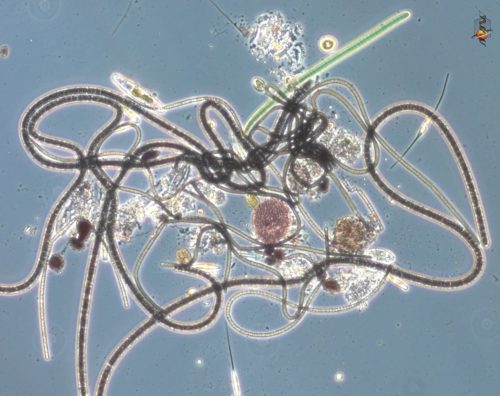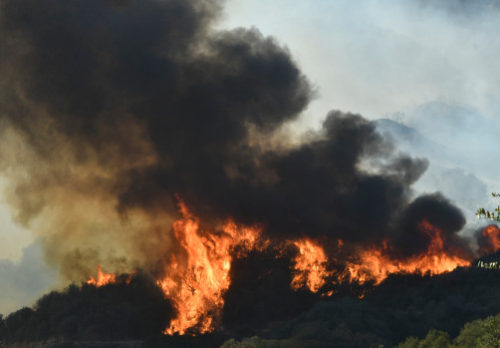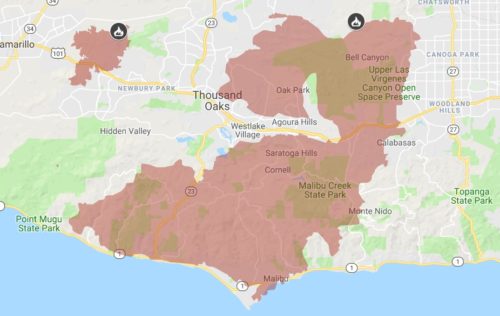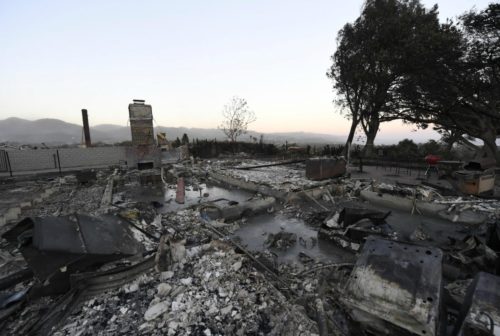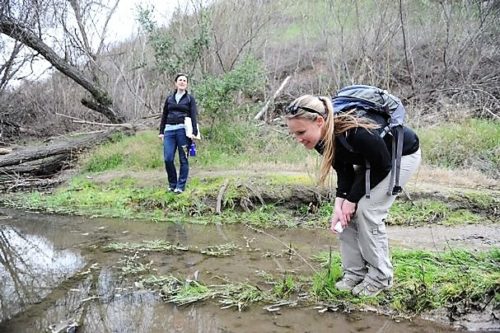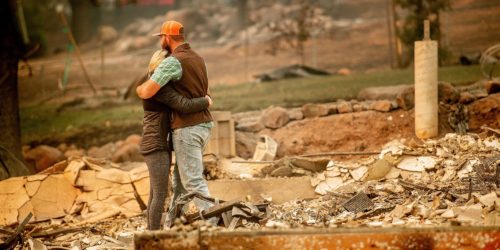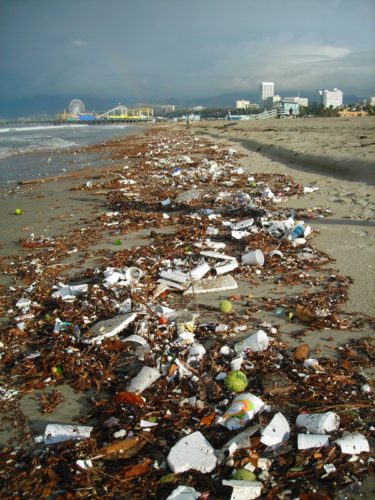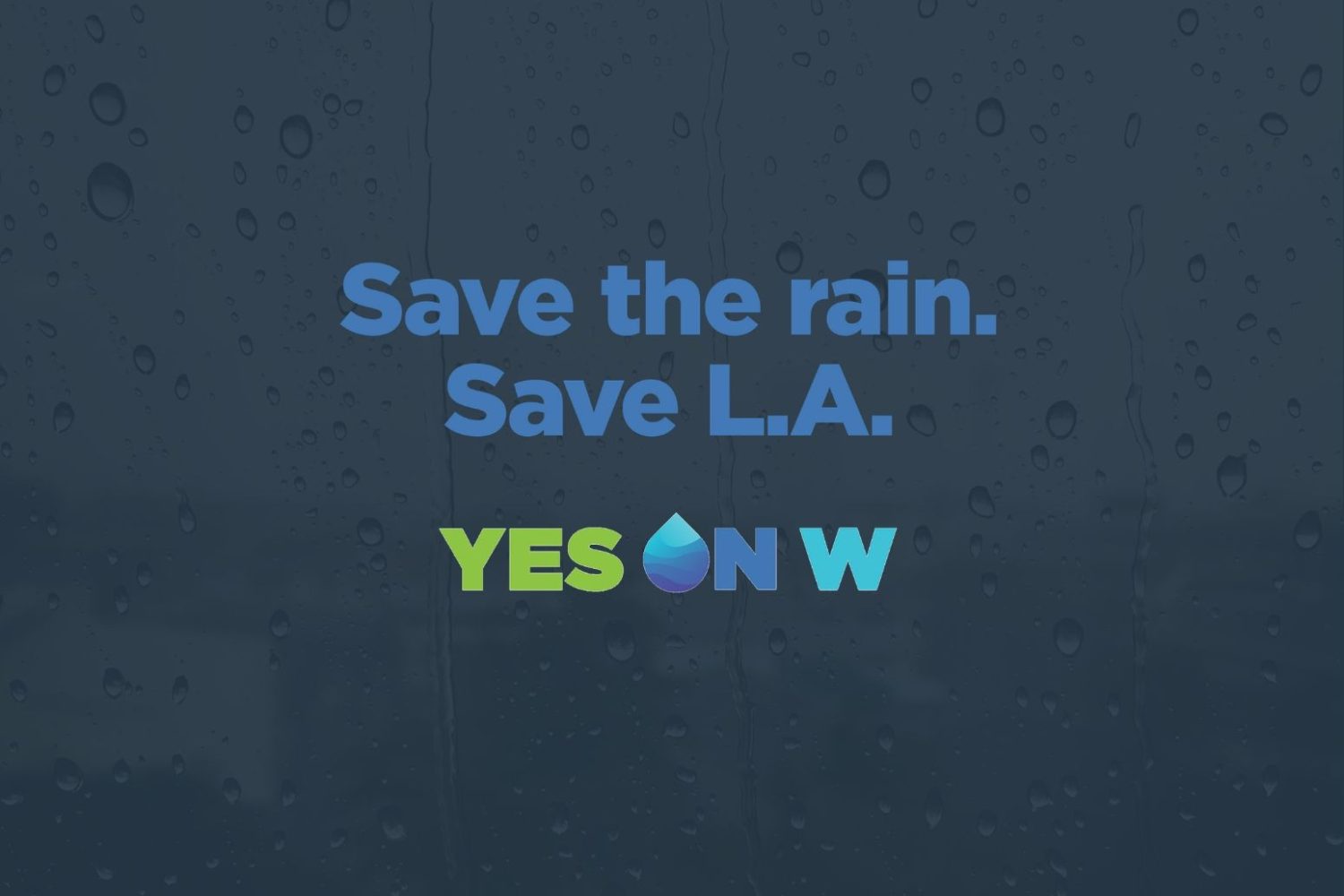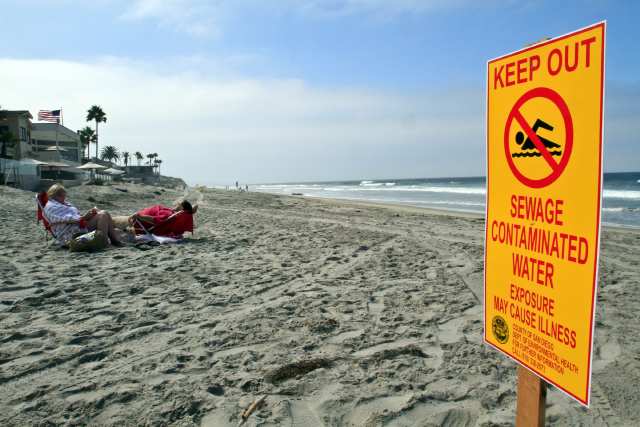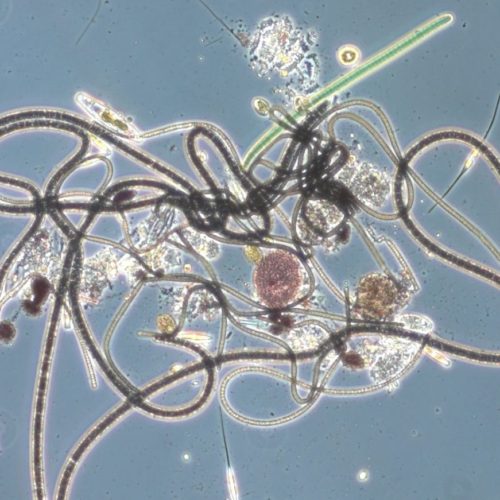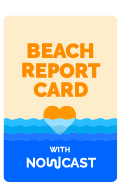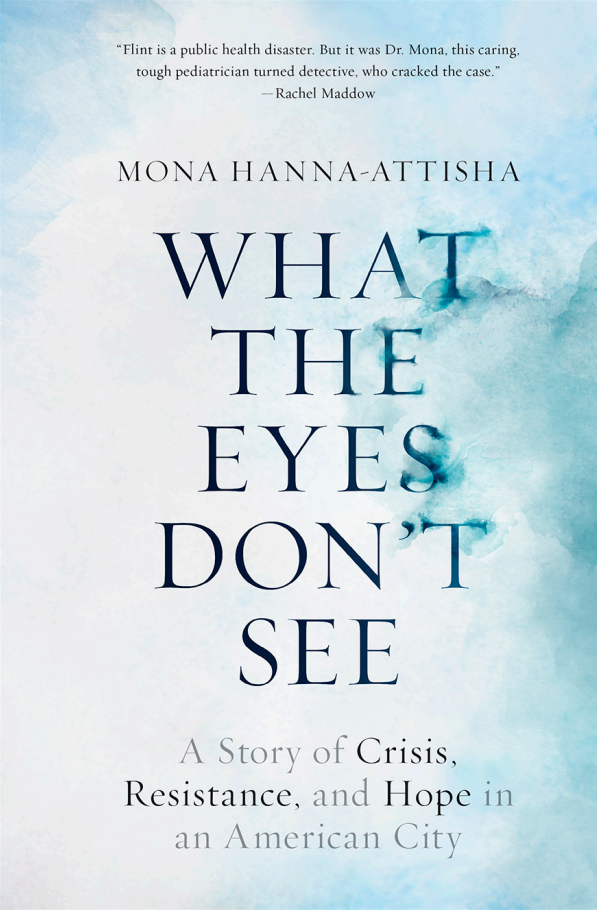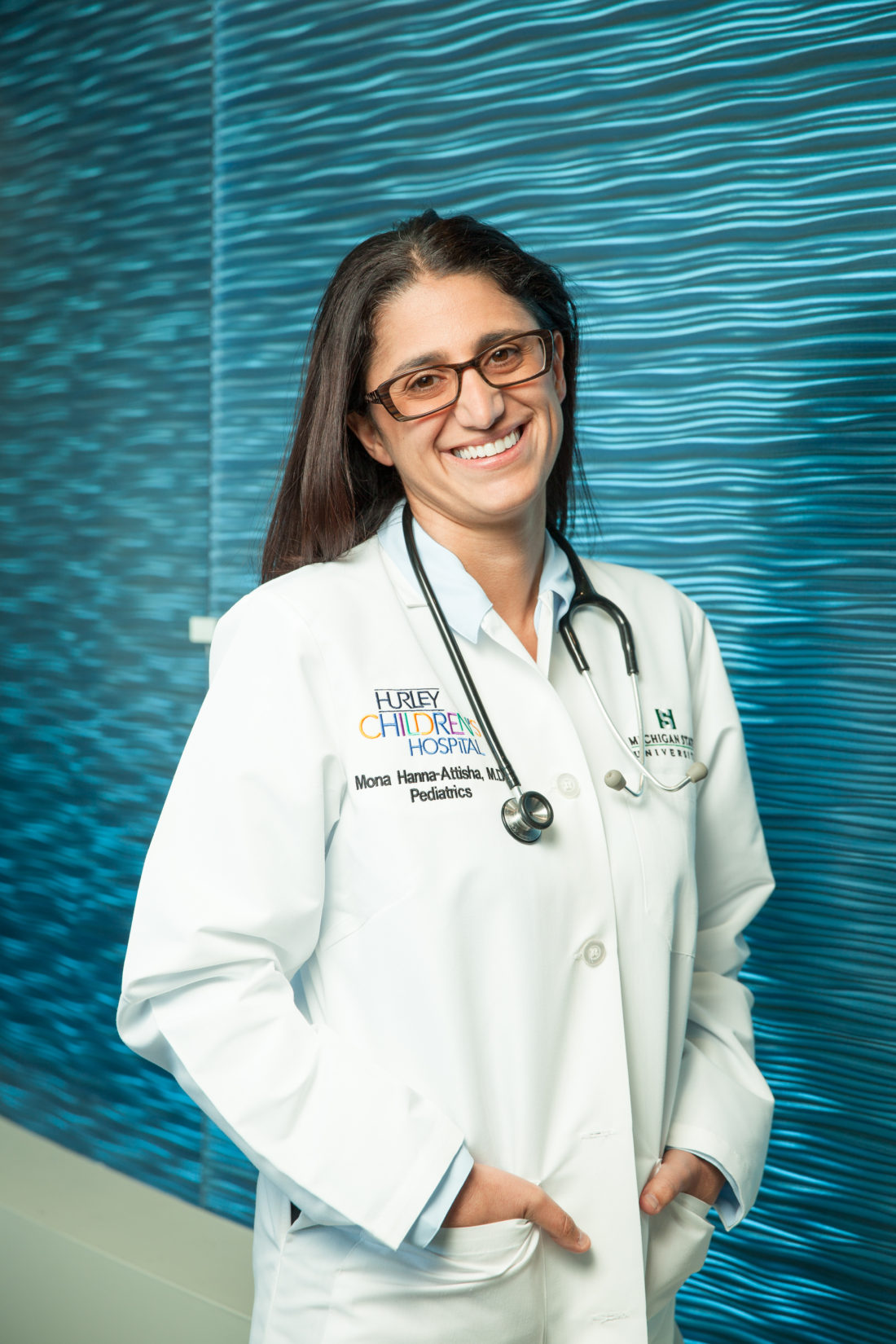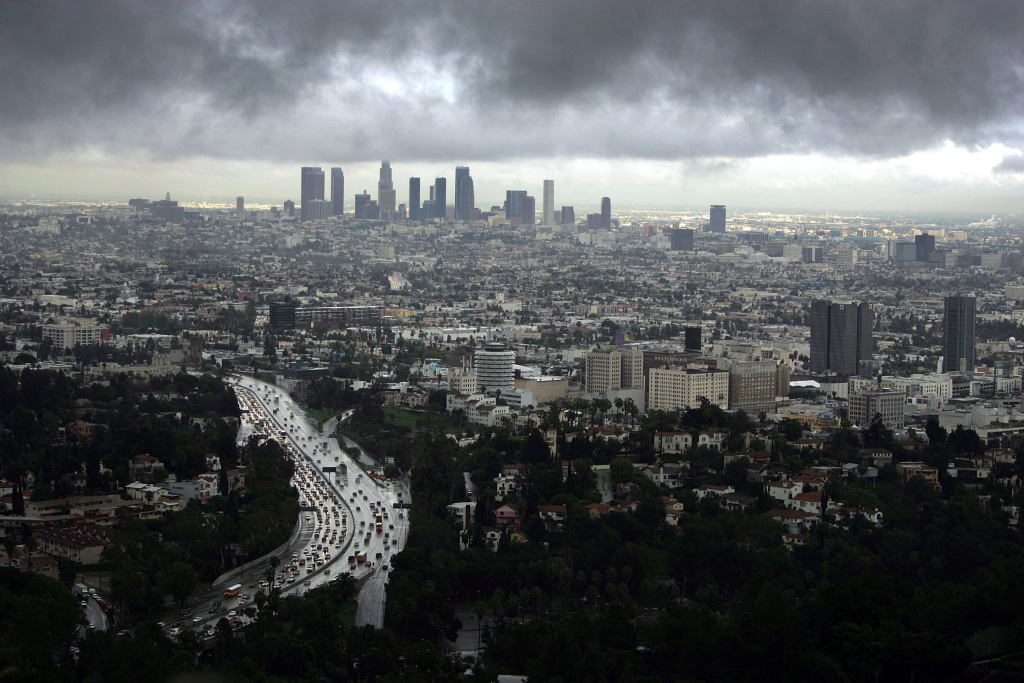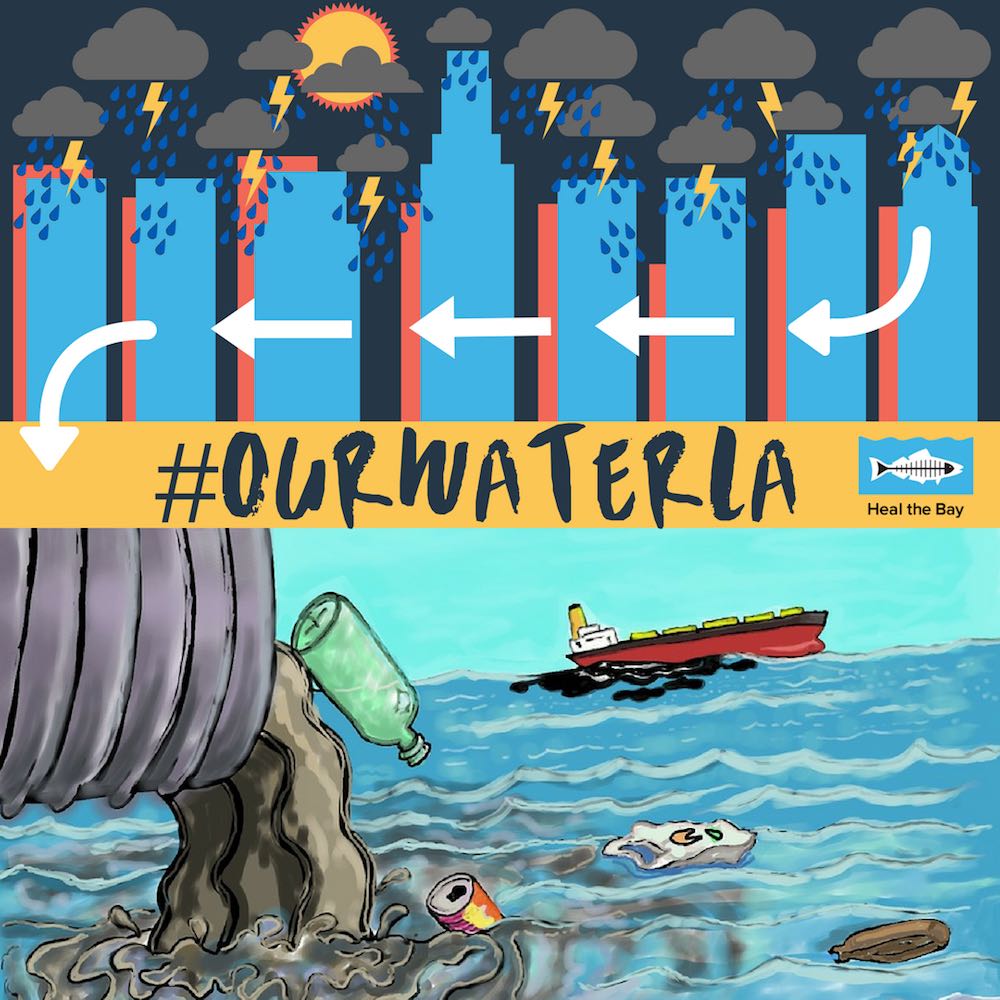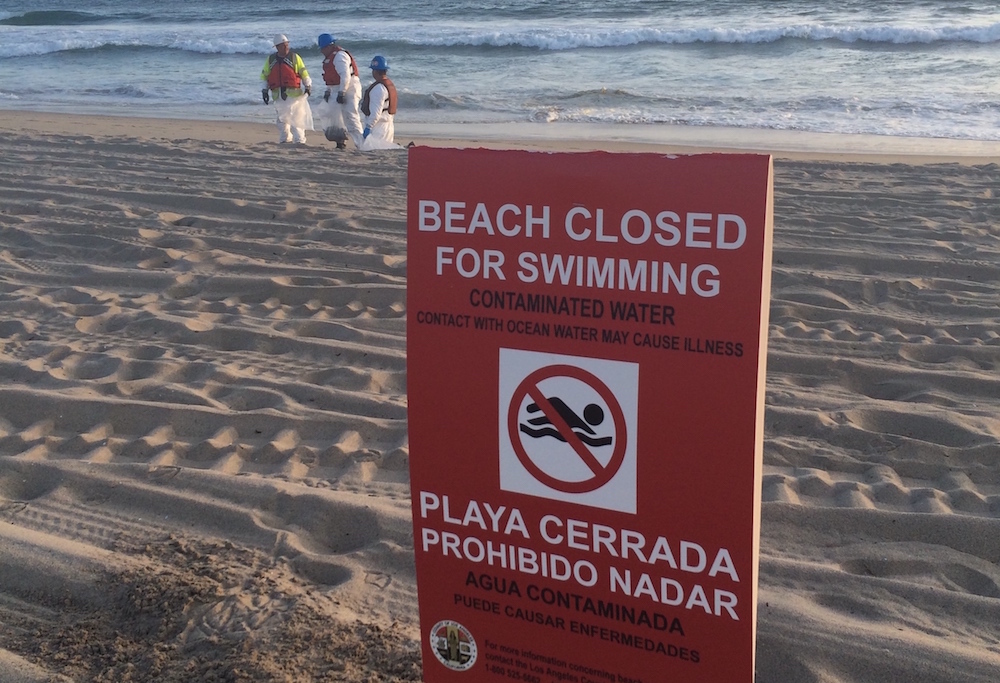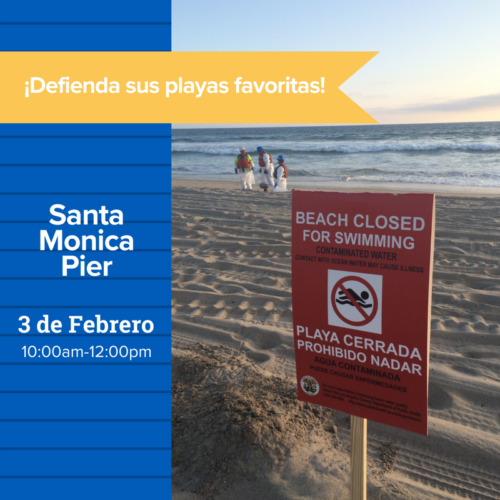Measure W is a water-quality funding measure on the November 6, 2018 ballot in Los Angeles County. Heal the Bay encourages you to VOTE YES ON W. Help us spread the word: Take part in an upcoming Measure W event -and- get the facts about this modest parcel tax that would increase our region’s local water supply upon voter approval.
L.A. has a once-in-a-generation chance on November 6, 2018 to capture, clean and save up to 100 billion gallons of rain each year — enough water to meet the needs of more than 3 million Angelenos annually.
Let’s not waste water. Let’s not waste this opportunity to secure our water future. Join a phone bank and see our Action Alert to encourage your social circles to VOTE YES ON W.
Get informed:
Frequently asked questions about Measure W:
Q: Why does L.A. County need the Safe, Clean Water Program?
We live in a water-scarce area. Forces outside of our control can threaten our local water resources, including lakes, rivers and beaches. L.A. County residents rely heavily on imported water – as much as two-thirds of our water is imported from the Sacramento-San Joaquin Delta, Owens River, Arizona, and the Colorado River – hundreds of miles away.
Climate change is causing more and more extreme weather conditions, making these remote sources more unreliable. The impacts of the recent five year drought were widely felt here.
Rainfall is an essential, local source of L.A.’s water. Rain runs through local rivers, creeks
and streams and can be absorbed into the ground, replenishing our local groundwater supply. However, because so much of our region is paved over, when we do experience heavy rain, too much of that precious water is lost to the ocean before we can capture and clean it for use.
Our local water resources are also threatened by contaminants and pollution as
stormwater runs over streets and over paved areas into our rivers, creeks and streams. Pollution flows onto our beaches and into the ocean, posing a risk to public health risk and marine life.
Q: Is clean water normally scarce in the L.A. region or did the recent drought
cause a water shortage?
Even in years with normal rainfall, L.A. County is a water-scarce region. The recent five year drought put even more stress on our local water resources and made our regular situation dramatically worse. As climate change causes more weather extremes like the drought, we need to take significant steps now to protect and improve our local water resources.
Q: I know the drought was seriously harmful for our local water supply, but
didn’t the heavy rains last winter make up for it?
Unfortunately, no. When we do experience heavy rains, like this past winter, our existing stormwater system can only capture a fraction of that rainfall. Each year, L.A. County loses over 100 billion gallons of water – enough to meet the needs of more than 3 million people annually.
In addition to missing the opportunity to capture, clean and save more water, stormwater runoff picks up toxins from parking lots, streets and other developed areas and carries them into our rivers, lakes, streams and eventually our ocean. As extreme weather conditions become the new normal, we need a system that can capture more local rainfall, and clean and save it for future use.
Q: Do we capture and store rain already when we experience storms? How
much rainwater can we capture and store now?
Right now, L.A. County captures and stores enough rain each year to meet the needs of
approximately 1 million locals – about 10 percent of our county’s population.
Existing dams in the front range of the San Gabriel Mountains capture rainfall and stormwater that is conveyed to a network of “spreading grounds” – shallow and deep basins that have a sandy, gravelly, and/or cobbled bottom that allows water to pass into the ground, naturally filtering it along the way. The spreading grounds work in conjunction with the dams to capture as much water as possible to minimize the amount that flows to the ocean. Eventually, this water gets pumped into a water treatment and distribution system for us to use.
Unfortunately, our current system can’t capture all the rainfall we get. A major opportunity for a more reliable local water supply is capturing more rainfall, which we can store underground, clean, and re-use.
Q: How much more water could we be saving for our region?
With the Measure W investment, we could as much as triple the amount of rain we capture, preserving enough water to meet the needs of nearly 1/3 of Los Angeles County community, ensuring our region can see benefits from erratic and intense rain events.
Q: What funding exists for these important projects?
While some types of water supply projects are supported by reliable revenue, like regular rates, there is no dedicated funding source for stormwater projects.
Q: Can we count on the federal government to protect our beaches and water resources?
The U.S. Environmental Protection Agency and the Federal Clean Water Act have
historically been key in establishing stringent water quality standards; however, they provide minimal funding. Today, it’s more important than ever for our County leadership to take action to improve local water resources for L.A. County residents.
Q: How is L.A. County helping to solve these challenges?
There are smart solutions to help address the challenges we face when it comes to protecting and improving our local water resources, our beaches, rivers, creeks andstreams. L.A. County and the Los Angeles County Flood Control District have developed a program – the Safe, Clean Water Program – based on modern science, technology and nature-based solutions to:
- Keep toxins and trash from washing into local lakes, rivers, streams, beaches and the ocean
- Take advantage of less regular, more intense rainstorms in order to save more rainfall and clean it for use, which would mitigate the impact of drought and also protect public health
- Increase community protections against extreme weather patterns and climate change while adding natural areas, shade and green space to enjoy
Q: What would the L.A. County Safe, Clean Water Program do?
If we are able to get out the vote and pass Measure W in L.S. County this November, the Safe, Clean Water Program would fund stormwater capture projects and programs that improve water quality; increase water supply; and invest in communities by developing a skilled local work force, greening schools, parks and wetlands, and increasing public access to natural areas like rivers, lakes, and streams.The Program would fund the construction and maintenance of projects that:
- Protect public health by cleaning stormwater pollution and contamination
- Safeguard marine and other wildlife from trash and toxins in stormwater runoff
- Mitigate severe drought impacts by increasing local water supply
- Update our local water infrastructure to capture and treat stormwater
- Help cities meet their Clean Water Act obligation to clean stormwater
The program would prioritize projects that use nature-based solutions to capture, clean, and conserve stormwater, which can beautify communities while improving our resilience against extreme weather patterns of drought and heavy storms.
Q: What types of projects would the Safe, Clean Water Program Fund?
The Safe, Clean Water Program would fund a suite of project types that capture, clean, and conserve stormwater, from regional projects that benefit entire watersheds, to small local projects in communities. Some example project types include large wetland projects, enhancement of spreading grounds to capture water, water infiltration galleries under parks or other open space, or other “low impact development” that uses greening to capture and treat stormwater.
The best way to capture more water is to rely on natural areas, like streambeds, grassy parks, grassy fields at schools and other non-paved areas. These areas absorb rain naturally and refill our underground reserves.
One of the most exciting parts of the Safe, Clean Water Program is that the projects would use this strategy to not only capture more rain, but to also increase shade, parkland and natural areas for people and wildlife in our area in the process. See conceptual examples of projects that the Safe, Clean Water Program may fund.
Q: Would the Safe, Clean Water Program fund any programs?
Yes! In addition to projects on the ground, the Safe, Clean Water Program would also
fund a variety of educational and capacity-building programs for the region, which may include: local workforce job training; curriculum for schools; and public education on stormwater.
Q: How would the Safe, Clean Water Program be funded, and what would it cost me?
The L.A. County Department of Public Works has analyzed costs and funding
mechanisms to support critical rainwater capture and water quality projects in our region, and is proposing that the L.A. County Flood Control District levy a special parcel tax based on impermeable surface area (paved or built areas where water cannot infiltrate, and instead runs off as stormwater).
The modest tax would be levied on private properties in cities and unincorporated areas located within the L.A. County Flood Control District. The ultimate cost of the tax per parcel would be based on total area of impermeable surface on each property. An appeals process would be available for any properties that believe their tax amount has been incorrectly calculated. Currently under discussion are options for crediting those who are already capturing stormwater, and incentivizing others who want to do more. Calculate your estimated parcel tax.
Q: How much money would the Safe, Clean Water Program raise, and how
would the money be spent?
The Safe, Clean Water Program would aim to raise about $300 million per year to
implement needed stormwater capture projects. 90% of the total revenues collected for
the Safe Clean Water Program – currently aimed to be roughly $270 million – would be
available as a funding source to municipalities and communities.
All tax revenues generated for the Safe, Clean Water Program would be allocated as
follows:
- 40% to a Municipal Program that would return funds directly to cities and
municipalities for projects that improve water quality and provide additional
benefits
- 50% to a Regional Program that would fund watershed-based projects with
regional benefits including increased water supply and stormwater pollution
reduction
- 10% to a District Program for local workforce training, development and
implementation of educational programs, and for overall Program administration
Q: What is the Municipal Program, and what would it fund?
40% of revenues from the Safe, Clean Water Program would be returned directly to cities and unincorporated areas in the L.A. County Flood Control District proportionate to what each municipality is contributing toward the Program. Projects would be required to at least have a water quality benefit, and are encouraged to have additional benefits, including greening of schools, creation of parks and wetlands, or increased water supply.
The intent of the Municipal Program is to provide flexibility and local control so that funds can go toward those projects and programs each local government thinks best address local stormwater challenges and opportunities. Notably, cities and municipalities can use up to 30% of their local return revenues to pay for operations and maintenance of projects that existed prior to the commencement of the Safe, Clean Water Program, and related activities.
Q: What is the Regional Program, and what would it fund?
50% of revenues from the Safe, Clean Water Program would fund watershed-based
projects that provide regional benefits, including stormwater pollution reduction,
increased water supply, and investments in communities on the ground.
The majority of funding for the Regional Program would go toward regional and small scale capital improvement projects – new infrastructure. A portion of these funds would be made available for scientific studies and technical assistance.
The Regional Program funds would be distributed to 9 identified “Watershed Areas” in
the L.A. County Flood Control District in proportion to the revenue collected in that area. The Program would include provisions ensuring that investments are made in underserved and low-income areas for the implementation of projects that would provide clean water benefits for all.
Q: What is the District Program, and what would it fund?
10% of revenues from the Safe, Clean Water Program would fund: coordination of
stormwater education and capacity-building programs; provision of regional leadership and coordination for water quality planning and modeling; implementation of multi-benefit projects; and overall administration of the Safe, Clean Water Program.
Q: Who would decide how to spend Safe, Clean Water funds?
Municipal, Regional, and District funds will be administered differently, as follows:
- Municipal Program: Each city and unincorporated area in the L.A. County Flood Control District would have control to allocate funds returned to them in the manner that they believe best meets Program goals
- Regional Program: Stakeholder committees for the 9 identified “Watershed Areas” in the L.A. County Flood Control District would identify projects, and relay them to a regional oversight committee to make a final recommendation for affirmation by the L.A. County Board of Supervisors
- District Program: The L.A. County Flood Control District would determine how to use these funds to administer programs, studies, and the Program as a whole
Oversight measures, reporting, and auditing procedures would be in place for each of
these programs to ensure that Program funds are being used in the most beneficial ways possible.
Q: Who would be eligible to apply for funding?
The Safe, Clean Water Program has very broad applicant eligibility to increase access to funding. Any individual, group, special district, school, municipality, non-governmental organization (NGO), non-profit organization, community based organization (CBO), public utility, federally recognized Indian tribes, state Indian tribes listed on Native American Heritage Steering Committee’s California Tribal Consultation List, mutual water company, or other entities that submits a project for consideration would be eligible to receive funding through the Safe, Clean Water Program.
Q: Would schools benefit from the Safe, Clean Water Program?
Yes, schools would be eligible to apply for funding to implement projects. They also
would be valuable partners for developing projects with other entities.
Public school districts would not be taxed under the potential funding measure.
Q: How is the County going to take advantage of other existing funding
sources for this program?
L.A. County and the Los Angeles County Flood Control District are working to identify
funding and opportunities to share costs with other agencies. Several cities in the County are investing limited funds in stormwater capture and re-use plans, and the L.A. County Safe, Clean Water Program would help unify these efforts and maximize resources to support safe, clean local water resources for all L.A. County residents.
Q: Who would oversee the Program and spending?
Oversight mechanisms are critical to ensure that Program funds are being spent
responsibly and that benefits are realized throughout the region over time. Each of the funding recipients within the Municipal, Regional, and District will be required to undergo an independent audit every 5 years.
Q: Is anyone exempt from paying for the Safe, Clean Water Program?
The Program proposes to exempt low-income senior citizens. Public properties, like
public schools, would be constitutionally exempt from the proposed parcel tax.
Q: When will money from the Safe, Clean Water Program be available for projects?
Immediately after the potential voter approval of Measure W, the process for evaluating and soliciting regional projects begins. As part of the Municipal Programs, cities could start receiving funds for local stormwater capture projects and programs as early as Winter 2020.
Q: What are the primary outcomes the Safe, Clean Water Program would likely achieve?
The Safe, Clean Water Program would result in a series of outcomes, including:
- Meaningful improvements in water quality
- Meaningful increases in local water supply
- Community investments, including greening of streets and schools, and improved access to rivers, lakes, and streams
- Improved collaboration with stakeholders to consider and implement projects and programs that offer the greatest potential for significant impact
- Tangible benefits in communities throughout the region
Q: Would the Safe, Clean Water Program help our cities comply with current State and federal water quality standards?
Investing in local water quality is a priority for the L.A. County Board of Supervisors. The L.A. County Board of Supervisors wants to ensure that any funds spent through the Safe, Clean Water Program help our area meet standards for clean water, while also addressing other regional priorities, such as adequately protecting the region against impacts of future droughts, improving the resilience of our water system, and delivering tangible benefits to our communities.
Q: Would the Safe, Clean Water Program be better for public health?
Yes. It’s no secret that dirty water from heavy storms results in beach closures following heavy rain in Los Angeles, because of threats to public health. By using smart, nature-based solutions, we could capture more runoff and filter out harmful toxins and pollutants. In the process of capturing and cleaning stormwater, projects in the Safe, Clean Water Program would add more green space, further supporting healthier communities.
Q: How would the Safe, Clean Water Program help low-income and
underserved communities?
Providing benefits to low-income and underserved communities is a priority for the Safe, Clean Water Program. There are many ways the Program will prioritize funding to disadvantaged communities, including: funding available for small-scale or community projects; priority consideration for projects benefitting disadvantaged communities or with strong community support; involvement of stakeholders and community groups in decision-making on funding priorities; funding available for technical assistance and feasibility studies, and funding stormwater education programs.
Through these avenues, the Safe, Clean Water Program hopes to provide equitable access to Program funds, as well as receipt of Program benefits.
Q: Would the Safe, Clean Water Program benefit marine life?
Absolutely. Each year, marine mammals, seabirds, and fish die, either from mistakenly
eating plastic garbage and other harmful contaminants, or ensnaring themselves.
Annually, over 4,000 tons of trash is found on L.A. County beaches. By preventing stormwater runoff from carrying tons of trash and contaminants out to sea, we can better protect marine life.
Learn more about Measure W on the November 6, 2018 ballot in Los Angeles County:
